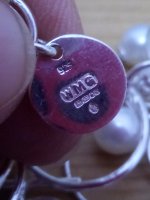pearlescence
purveyor of pearls UK/EU
- Joined
- Aug 18, 2007
- Messages
- 4,120
Useful information piece on Hallmarking in the UK in the Financial Times.
(My hallmark is wmg in a rounded cartouche oval)
(My hallmark is wmg in a rounded cartouche oval)



